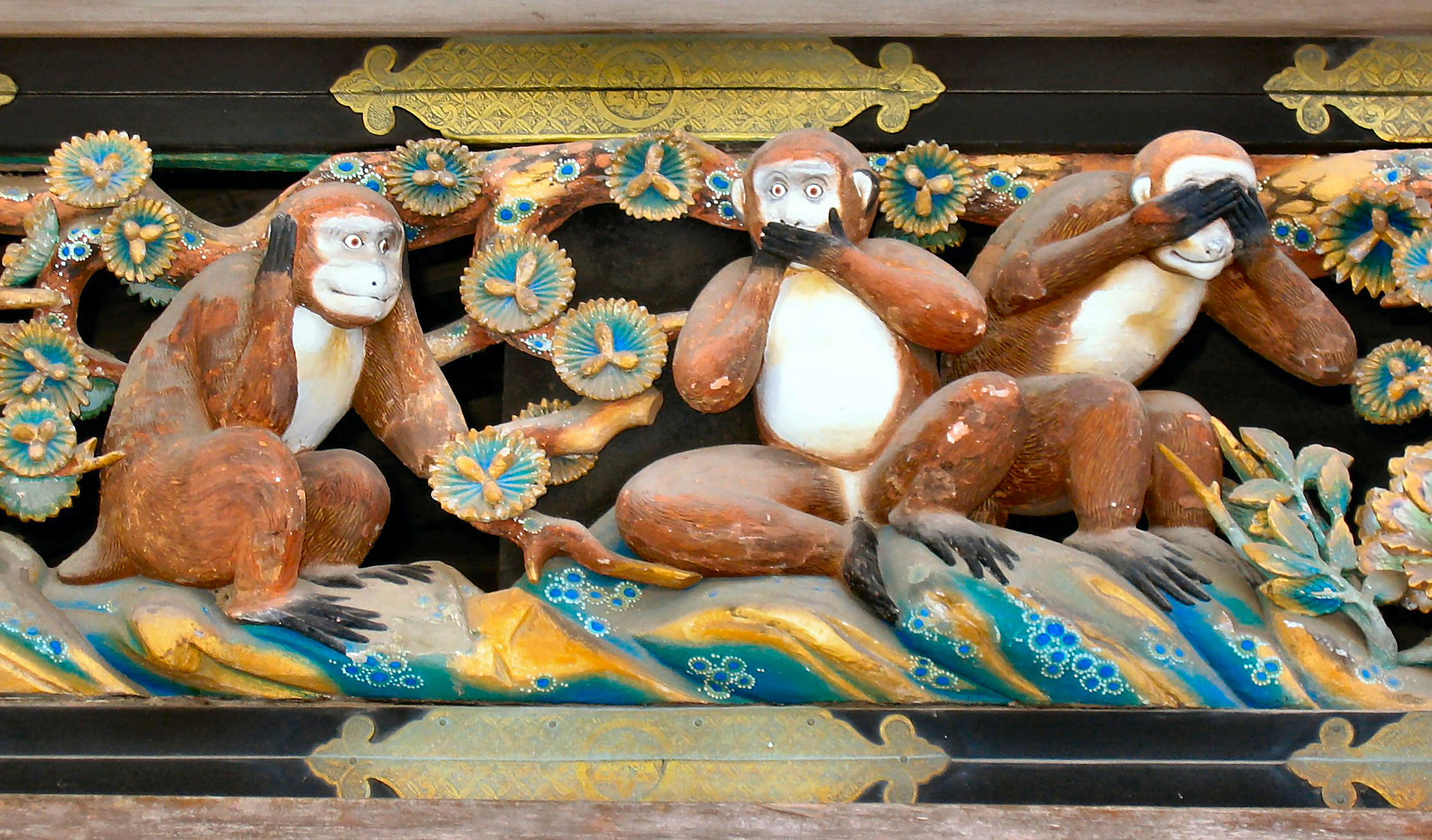When I was a wee lad of 4 or 5, I would sneak up on a chair and explore my grandfather's desk, atop of which was situated a curious object: a paperweight featuring the famous three wise monkeys of Nikko. At its base was inscribed the warning: Don't monkey with anything on this desk.
This was one of millions of similar novelties sold in the United States during the first half of the 20th century. And while some of their owners might have been aware those monkeys came from Japan, I suppose very few knew their real names — 見ざる (Mizaru), 聞かざる (Kikazaru) and 言ざる (Iwazaru) — which are rendered into English as "see no evil," "hear no evil" and "speak no evil."
Not until several decades later did I behold the carvings of the original 三猿 (san'en or sanzaru, three monkeys) at the Toshogu Shrine in Nikko. But it took me even longer to obtain a grasp of their nuances. The monkeys are said to symbolize a passage from 論語 (Rongo, the Analects of Confucius), in which China's ancient sage advised, "Look not at what is contrary to propriety; listen not to what is contrary to propriety; speak not what is contrary to propriety; make no movement which is contrary to propriety."



















With your current subscription plan you can comment on stories. However, before writing your first comment, please create a display name in the Profile section of your subscriber account page.